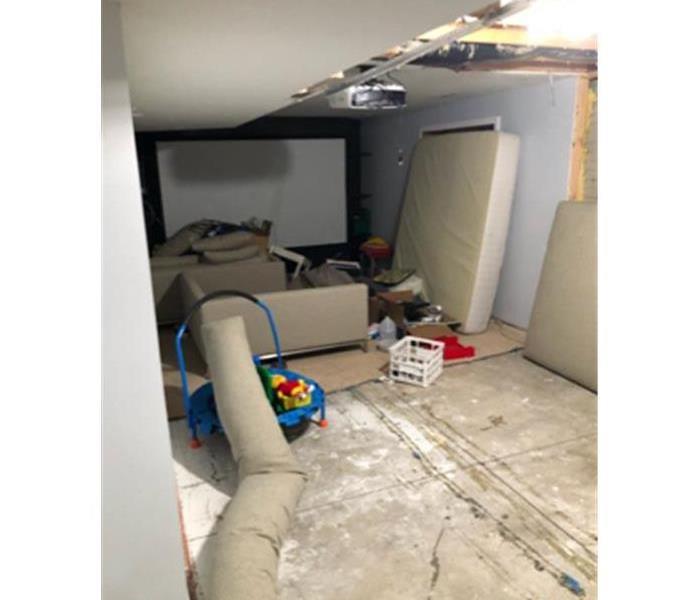
Step 4: Drying and Dehumidification
Our Water Damage Restoration Process
Once we extract the excess water and get it removed, the Floors and Walls may appear dry, but a quick inspection will reveal they are wet to the touch. Nearly all building materials, like Wood, Drywall, and Flooring Materials, are porous and therefore retain water. The retained water can cause materials to Breakdown, Warp, or cause Mold damage.
- Drying and Dehumidification- SERVPRO of Des Moines NW will use Measurements, Temperatures, and Relative Humidity to determine optimal number of air movers and dehumidifiers to Dry your Home or Business. So we go daily and get the reads off our equipment and check the progress using moisture readers, til we reach our drying goals.
Drying / Dehumidification
Our Professionals will use room measurements, temperature, and relative humidity to determine the optimal number of air movers and dehumidifiers to dry your home or business. We’ll carefully monitor the progress using moisture meters until the materials return to acceptable drying goals.
- Use Dehumidification Equipment
- Use Monitoring Equipment to Track Progress
Monitor Floor and Walls
We check the moisture levels to monitor the drying process.
- Monitor Floors
- Monitor Walls
Drying Equipment
- Industrial-grade dehumidifiers help prevent secondary water damage like swelling and warping of floors, walls, and furniture.
- High-speed air movers create airflow across walls, carpets, pads, and furniture, which accelerates the evaporation of moisture.





 24/7 Emergency Service
24/7 Emergency Service




